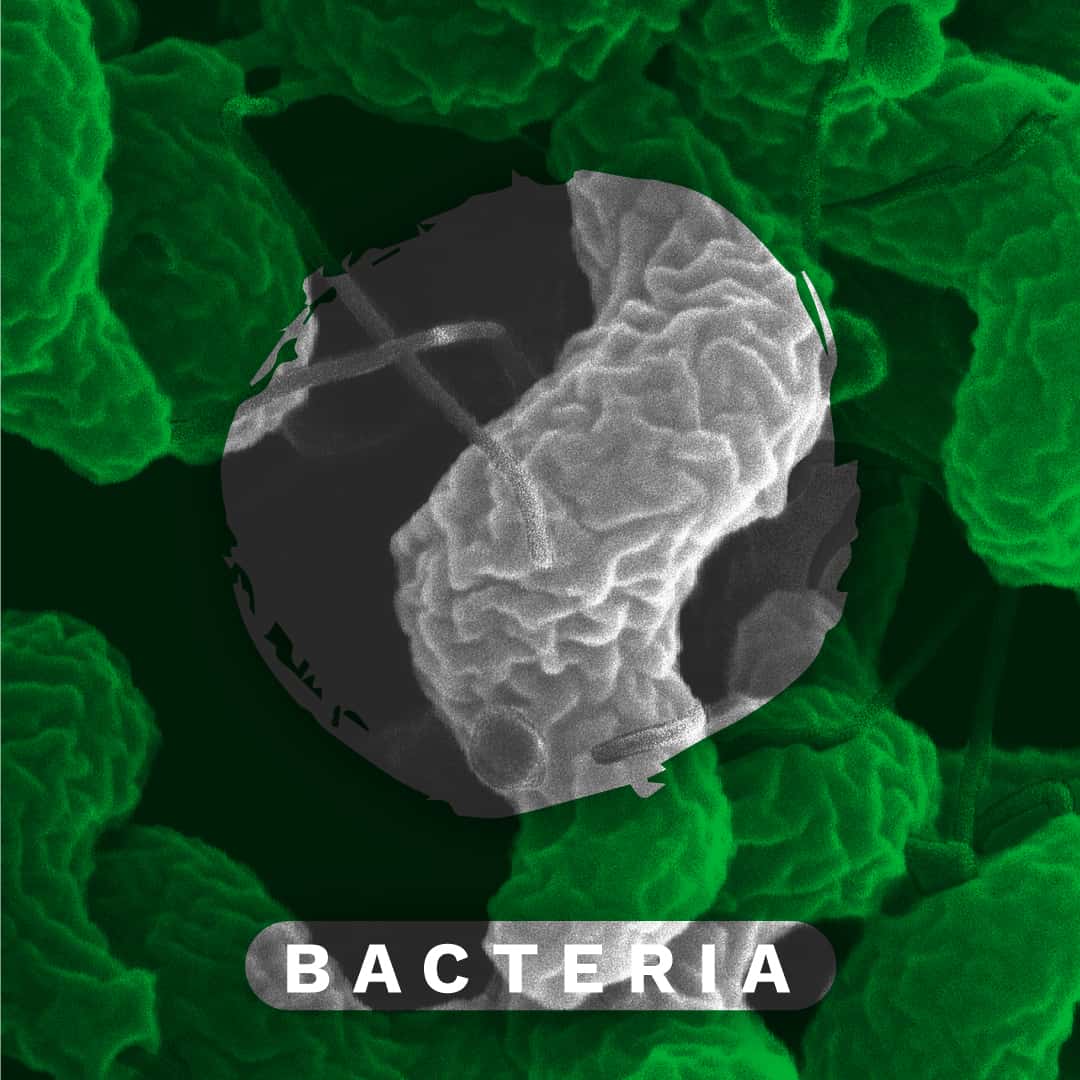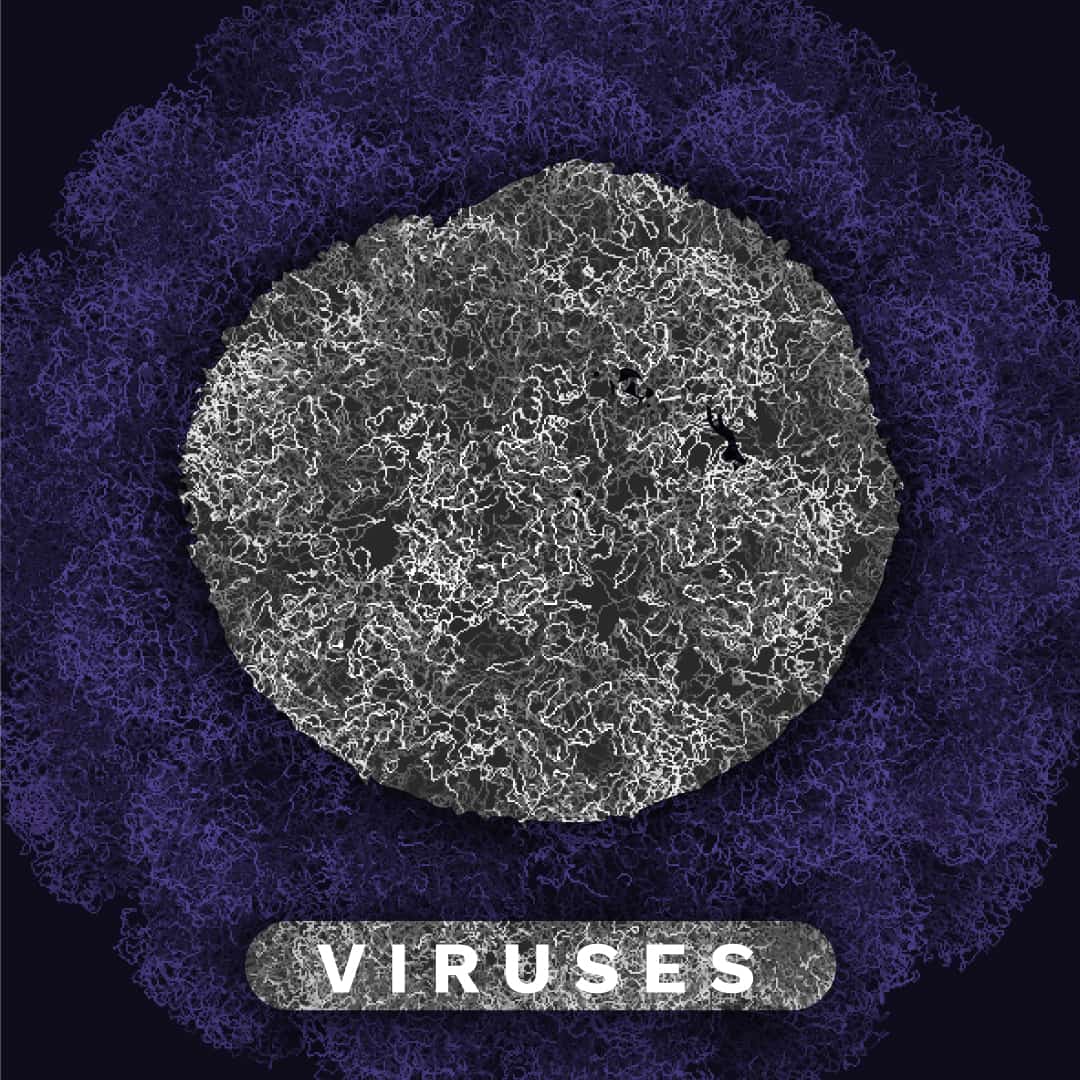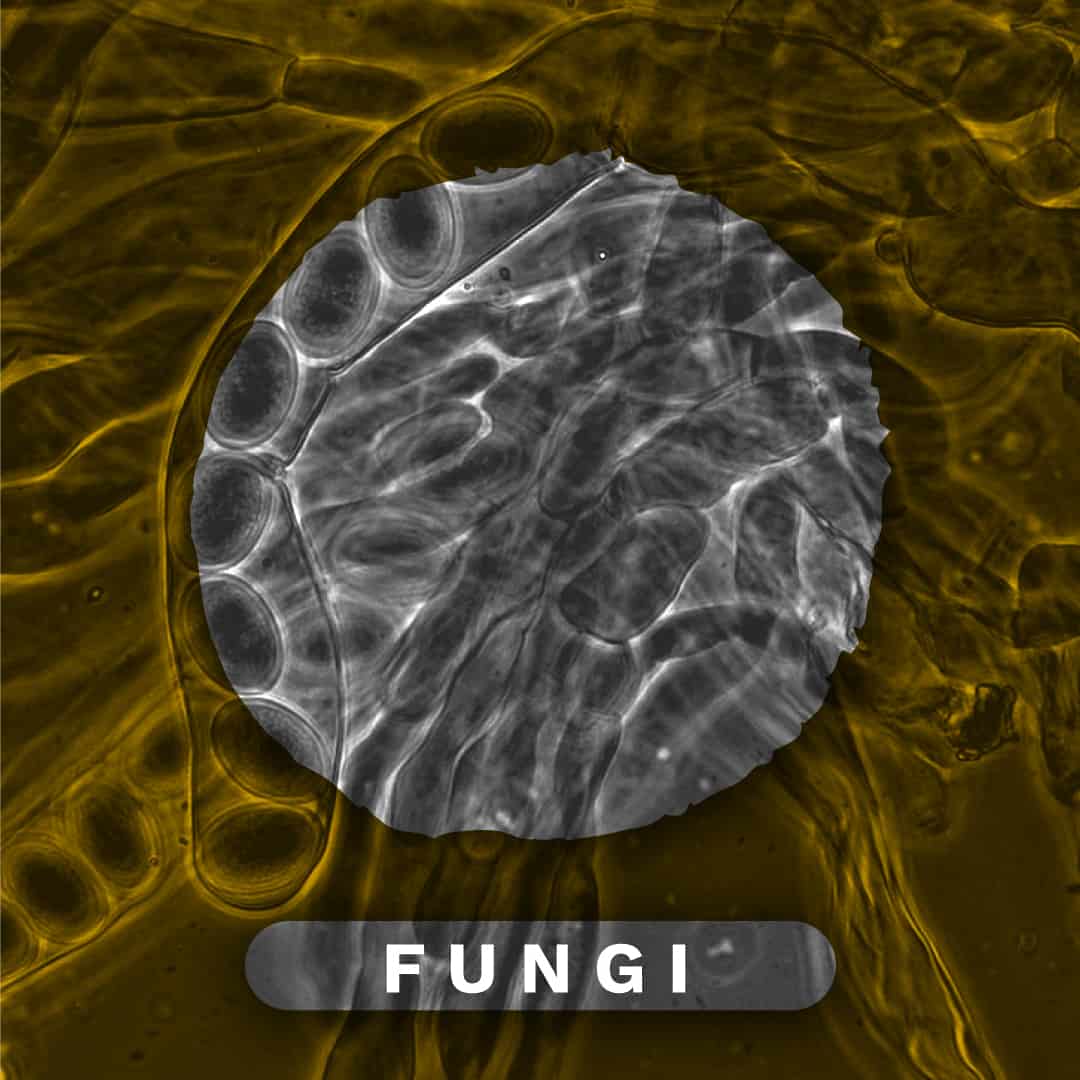What’s in the microbiome?
The skin microbiome, otherwise known as microflora or microbiota, is the combined term for all of the microorganisms that live on our skin. Most of them are harmless and, indeed, provide multiple benefits to our skin and health.
The microbiome is made up of 3 key components: bacteria, viruses and fungi. Let’s take a look at each one in more detail…
Bacteria
 In the microbiome, bacteria are the major players most often talked about. In 2008, findings published in Science showed that over 1,000 different species can be found on our skin alone!
In the microbiome, bacteria are the major players most often talked about. In 2008, findings published in Science showed that over 1,000 different species can be found on our skin alone!
But… what exactly are bacteria? These microscopic, single-celled organisms are often shaped like a sphere or a rod. Like our own cells, bacteria have their own DNA and they also ‘feed’ on sugar, proteins and fat from their environment (yes, that includes us!).
In a healthy microbiome, our bacteria keep our bodies functioning normally. A disrupted microbiome, as well as the introduction of harmful bacteria from external sources, can cause infection. In some cases, antibiotics are required to fight off the infection but remember that antibiotics can also harm our healthy bacteria, or cause dysbiosis, too.
While we love to talk about our bacteria, our bodies also host a range of other microorganisms including viruses and fungi…
Ref: Science – Microbiology – Pennisi, 2008
Viruses
 When talking about the microbiome, bacteria gets all the buzz! But did you know they’re not even the most abundant microbes in our body?
When talking about the microbiome, bacteria gets all the buzz! But did you know they’re not even the most abundant microbes in our body?
Viruses take the number 1 spot with more than an estimated 380 TRILLION living on and in our bodies – outnumbering bacteria in humans roughly 10:1!
Viruses are much smaller than bacteria and are simply genetic material (DNA or RNA) packaged inside a protein coating. They must therefore infect other cells in order to grow and reproduce.
The community of viruses in the body is given the collective term the ‘human virome’. These viruses may infect our human cells as well as other microbes in the body (such as bacteria). Those that infect our bacteria are suitably named bacteriophages, or phages for short.
While people think of viruses as evil creators of disease, it is not common for our human virome viruses to infect human cells and cause illness. Our virome does NOT include viruses that cause the flu or common cold, or more extreme infections like Ebola, Zika, or Covid-19; these all come from external sources.
In fact, most of our viruses are latent and have no negative – or potentially even a positive – effect on our health. However, our understanding of these is limited by the fact that they are so difficult to identify.
Indeed, overall, we know surprisingly little about what our viruses do as research is new and falls behind that of the bacteria. Who knows what we may discover in the future!
Refs:
Current Opinion in Virology – Mokili et al, 2012
Microbiology and Molecular Biology Reviews – Rowan-Nash et al, 2019
EarthSky.org – Pride, 2018
Fungi
 People commonly associate fungi with problems such as athlete’s foot, dandruff and thrush, but fungi do not always cause us trouble. Fungi are also found in our healthy microbiome alongside bacteria and viruses, though are less abundant, constituting less than 0.1% of the total microbiome.
People commonly associate fungi with problems such as athlete’s foot, dandruff and thrush, but fungi do not always cause us trouble. Fungi are also found in our healthy microbiome alongside bacteria and viruses, though are less abundant, constituting less than 0.1% of the total microbiome.
Fungi are mostly* multicellular plant-like organisms that, like our cells, have a defined nucleus. These cells are much larger than bacteria and viruses and tend to appear as spores and/or tree-like networks. Their larger size means their colonies may be visible to the human eye e.g. mold on bread.
Our commensal (healthy) fungi that live in and on our bodies are collectively known as the mycobiome and their function is currently largely unclear. In the gut, it has been found that abundance of fungi and bacteria are negatively correlated. As such, disruption of bacteria appears to be a prerequisite for overgrowth of fungal species. The relationship between bacteria and fungi have also been explored on the skin with different results depending on site!
Body site differences on the skin have also been observed for fungi alone: the body is largely dominated by Malassezia species, except on the feet where fungi are more diverse. This indicates that fungal diversity is more dependent on body site than the individual.
We know that the mycobiome is complex and helps shape our bacterial communities but there is still much to be learnt around how our skin fungi contribute to health and disease!
*Yeasts are a specific unicellular form of fungi.
Refs:
Cold Spring Habor Perspectives in Medicine – Seed, 2015
Current Topics in Microbiology and Immunology – Kapitan et al, 2019
Nature – Findley et al, 2013
For more Microbiome Basics content browse our Content Hub, Instagram page, or visit the Skin microbiome basics page!
